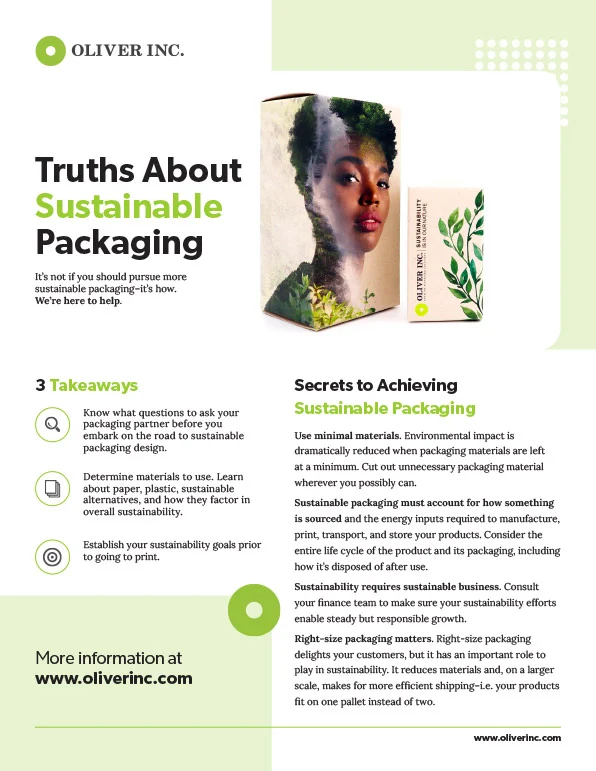Why Extended Gamut Printing (aka ECG) Is Ideal for Private Labels
Posted by Oliver Inc. on 18th Nov 2021
Private label products typically come with a lower price tag than their name brand counterparts on shelves. In order for these brands to truly be competitive, the manufacturer must ensure the most cost-effective solutions are utilized during packaging production. Manufacturers who produce pharmaceutical packaging have been historically hampered by this. However, new developments in printing technology are making expeditious print runs possible at a lower cost—without sacrificing quality.
That’s where extended gamut printing comes into play.
What Is Extended Gamut Printing (aka ECG)?
Extended gamut printing, also known as expanded color gamut (ECG), goes beyond the traditional four-color process involving cyan, magenta, yellow, and key black (CMYK) to include orange, green, and violet. ECG has actually been around for several decades, but its new formulas now facilitate more than 90% Pantone Matching System colors. This is assisted by the Pantone EG Color Guide, which establishes definitive guidelines, empowering brands to reach color matching previously only imagined.
Efficiency is the primary advantage printers and manufacturers gain with ECG. Instead of having to utilize multi-step spot coloring, in which printers must formulate and mix custom inks, they can replicate those colors at a lower cost. While printing with spot colors enables more control, ECG mixes seven standard inks digitally during pre-press, delivering the same quality colors in a more cost-effective manner.
Private label manufacturers have benefited greatly from ECG. They can complete combination runs, saving time and resources, to print high-quality solutions in a much shorter amount of time as compared to using custom spot colors. This keeps costs down and ultimately shortens lead times for customers.
The benefits of ECG are especially important for white label OTC products, where the manufacturer is producing the same generic product under many different major retail brands.
Using ECG With Private Label OTC Products
Private labeling involves a manufacturer agreeing to sell an exclusive variation of their product formulated specifically for a particular retailer. However, the retailer packages and resells it under their own brand. Similarly, pharmaceutical manufacturers will create a generic version of their product, which they allow a non-exclusive number of retailers to package and resell under their in-house brands; this is called white labeling.
Retailers do this to foster brand loyalty. For instance, regional grocery stores will sell a private or white label product—at a lower price—next to the national brand product, encouraging customers to purchase the in-house version alongside other shelved items. This also helps them generate more revenue from consumers less willing to pay a premium for the national brand products.
In creating a private or white label, retailers do their best to imitate the color scheme and design elements of national brands. In a way, this helps them borrow from the brand strength already established by larger manufacturers. The key resides in achieving a nearly identical color match between the national and their in-house brand.
ECG makes this possible among OTC products at a reasonable cost.
With ECG, a manufacturer can run multiple brands and categories on the same print form, saving costs, time, and ink units on the press. Consequently, they can produce more private or white label packaging efficiently.
Additionally, by mirroring the precise color national brands use, other OTC companies can strengthen the market share with their private or in-house OTC labels. Consumers, especially those shopping in a hurry or on a budget, have been trained to spot the precise color for each OTC remedy.
It’s worth noting that ECG printers may find some spot colors—notably metallics, some pastels, and certain high-chroma colors—require special solutions. Furthermore, while 90% of Pantone colors can be matched using ECG with a Delta E of 2.8, only about 74% of colors can be matched at a Delta E of less than 2. You’ll want to discuss both limitations with your packaging partner.
One-Stop Solution for Private Label OTC Products
Not just for private labels, ECG can be employed with all aspects of OTC packaging, including folding cartons and marketing collateral. Manufacturers capable of printing each product stand apart from the competition.
Given the consumer risk inherent in OTC products, dosage, ingredients, and instructions must be contained on primary and secondary packaging, alongside the usual marketing visuals. In fact, OTC packaging must comply with stringent safety requirements for a product to go to market. You don’t want to risk compromising your brand by failing to achieve full compliance.
All these factors create a complex situation, which can be compounded if your brand chooses to disperse printing, packaging, and assemblage to different third-party vendors. If you can find a printing and packaging partner capable of combining all for a one-stop solution, you’ll avoid unnecessary production costs.
So whether you're looking for the ideal private label solution or an end-to-end process, ECG will ensure you can achieve nearly identical color matches at an expedited printing rate, giving your brand the visual qualities and efficiency it needs to compete in the OTC pharmaceutical ecosystem.
With more than 250 years of combined experience, Oliver provides pharmaceutical brands a one-stop solution for their white and private label needs. Contact us today to learn more about our extended gamut printing capabilities.






